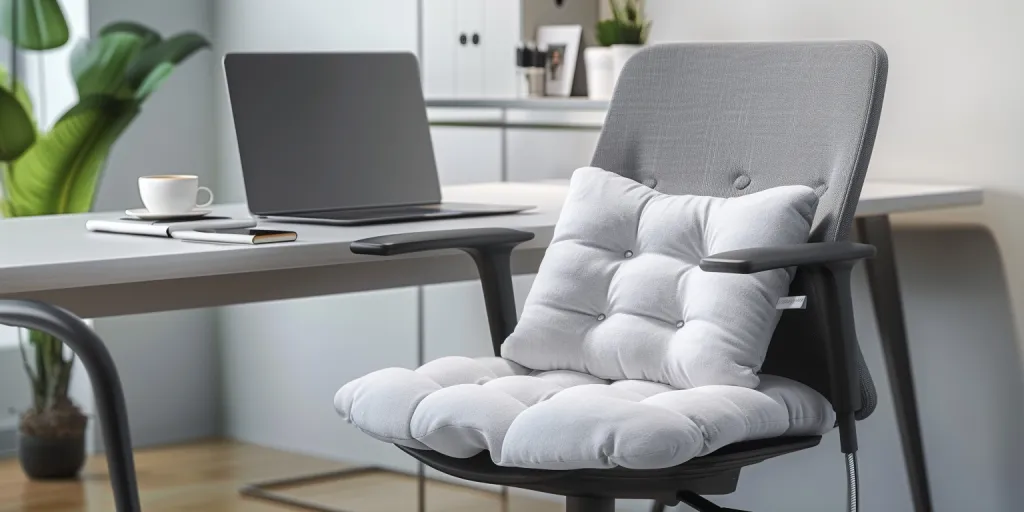Office life is spent a lot of time sitting, especially for those of us who work at a desk. In this article, we’ll identify what users love most about office chair cushions and how an specially designed cushion can help improve your sitting experience. Whether it’s ergonomic or about materials, we’ll highlight everything you need to consider when choosing a cushion that fits your own style.
Table of Contents:
– Understanding ergonomic benefits
– Exploring material and design options
– Assessing durability and maintenance
– Considering size and compatibility
– Evaluating additional features
Understanding ergonomic benefits
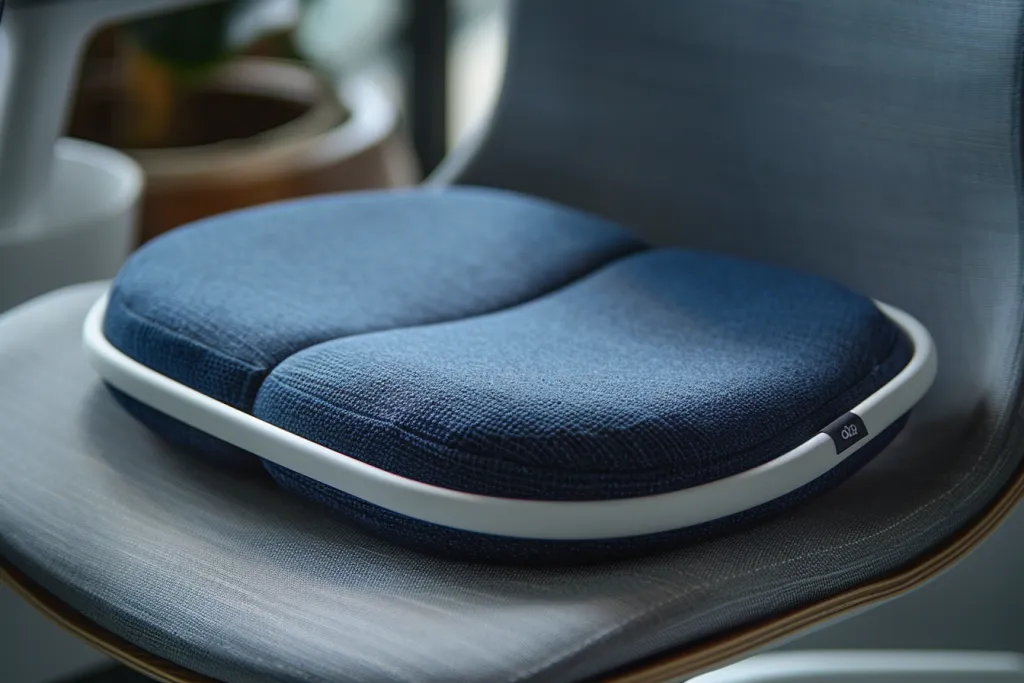
An office chair cushion is designed in such a way as to offer the greatest level of comfort to its user. An ergonomically designed cushion will help the user to sit in the correct position, avoiding a slouched posture, which can cause tension within the body, especially in the lower back and the hips, which are often overlooked when one is sitting for an extended period of time. The principle of weight distribution and the constant reduction in pressure points is crucial to comfort and alleviating pressure, especially over long periods.
The essence of er for a cushion that conforms to the natural convex surface of the spine, thereby avoiding slouching and maintaining a neutral spinal position – a key consideration in preventing MSDs – while also increasing blood circulation. This, and the other benefits mentioned, are not negligible for those who sit for more than six hours a day.
An office chair cushion with a thoughtfully designed form and structure is not just a matter of comfort. It helps create a more health-supportive posture, which can ultimately improve your wellbeing and productivity by following the laws of anatomy.
Exploring material and design options
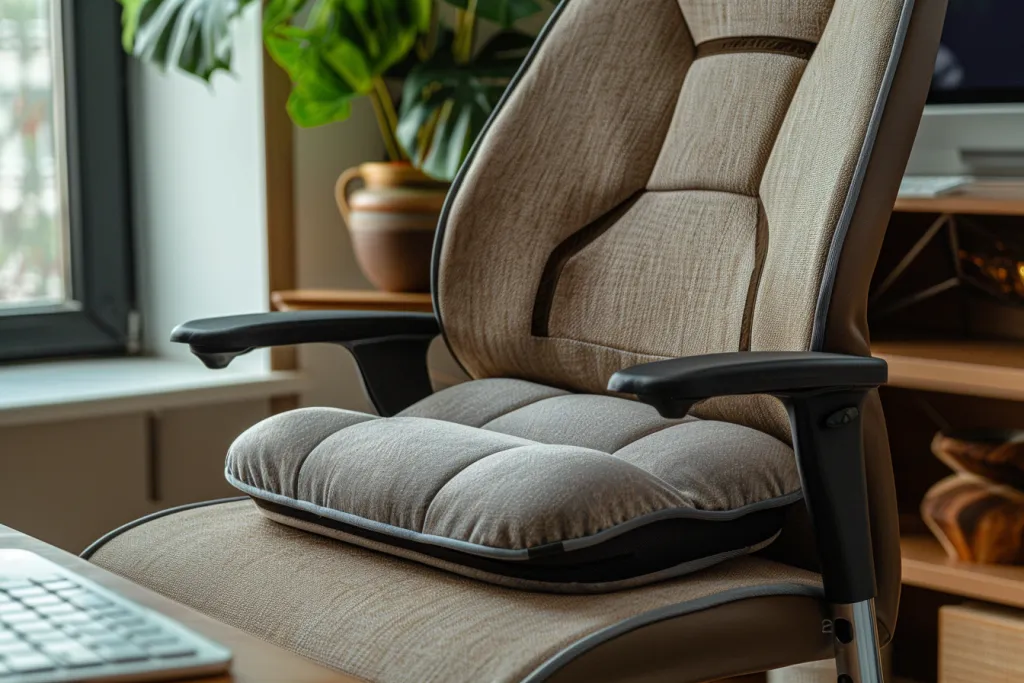
While office chair cushions boast many different materials with various benefits, the combination of memory foam and gel-infused memory foam are among the most innovative and highly acclaimed. Memory foam contours uniquely to the shape of the torso, providing a personalised support for the body Each of these materials offers distinct advantages. At a tepid room temperature, memory foam contours uniquely to the shape of the torso, providing a personalised support for the body. As the name suggests, gel-infused memory foam takes this one step further, offering the cooling properties of gel.
The second option is latex. Although made of natural material, it is much more durable than memory foam. Latex cushions have a firm feel, so they are suitable for users who choose that level of support. Besides, latex is hypoallergenic, so it is a good choice for anyone with allergies.
From the design perspective, there is much more emphasis on comfort and usability. Contoured features can hold the cushion in the right shape to fit the natural curve of your back, and adjustable straps can lock the cushion in place no matter how you move. Breathable fabrics in the cover can also keep you cool while you sit on the device all day long.
Assessing durability and maintenance
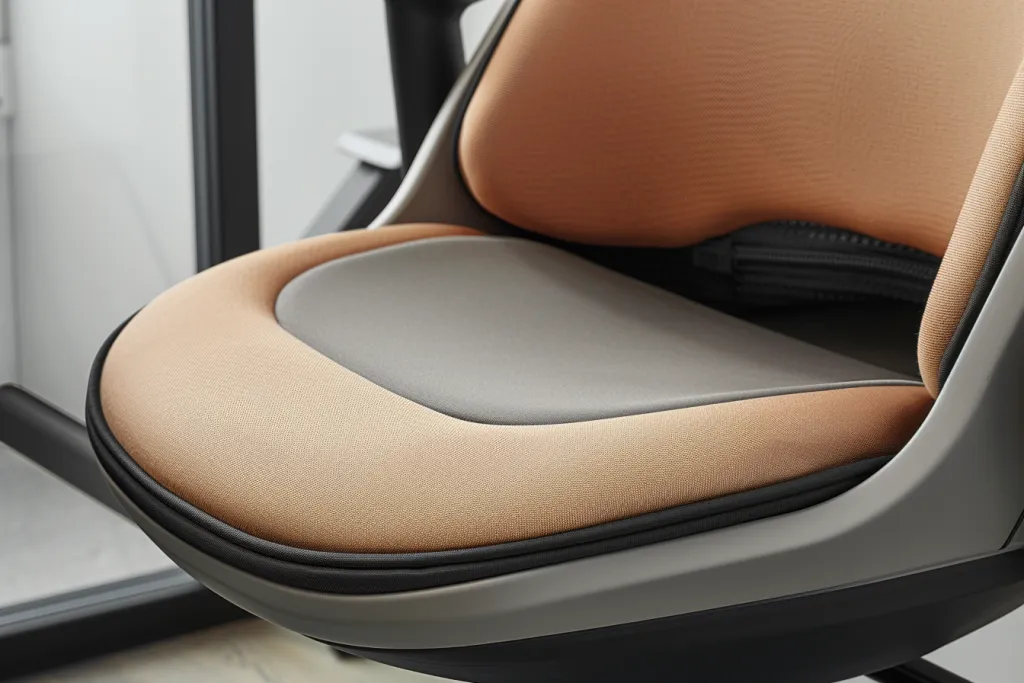
Durabilityis a key consideration in an office chair cushion. If the office chair cushion is durable, it will hold its value for longer. Indicators of the durability of an office chair cushion are the density of the foam or fabric used, and the type of cover. If then cover’s material does not tear, and it can be washed without falling apart, the cushion will be durable.
Maintenance contributes to appeal too. Ease of cleaning is another aspect of design that is helpful. The ability to remove the covers and machine-wash them – or, in some designs, to even remove and wash the foam itself – means that the cushion can be kept clean and fresh. It also helps if the cushion is made of a material that is resistant to mites and other allergens. Maintenance helps to make a cushion more user-friendly.
Ideally, for the office chair cushion to stay a welcome and sanitary part of your working day, there must be a right balance of durability and maintenance.
Considering size and compatibility
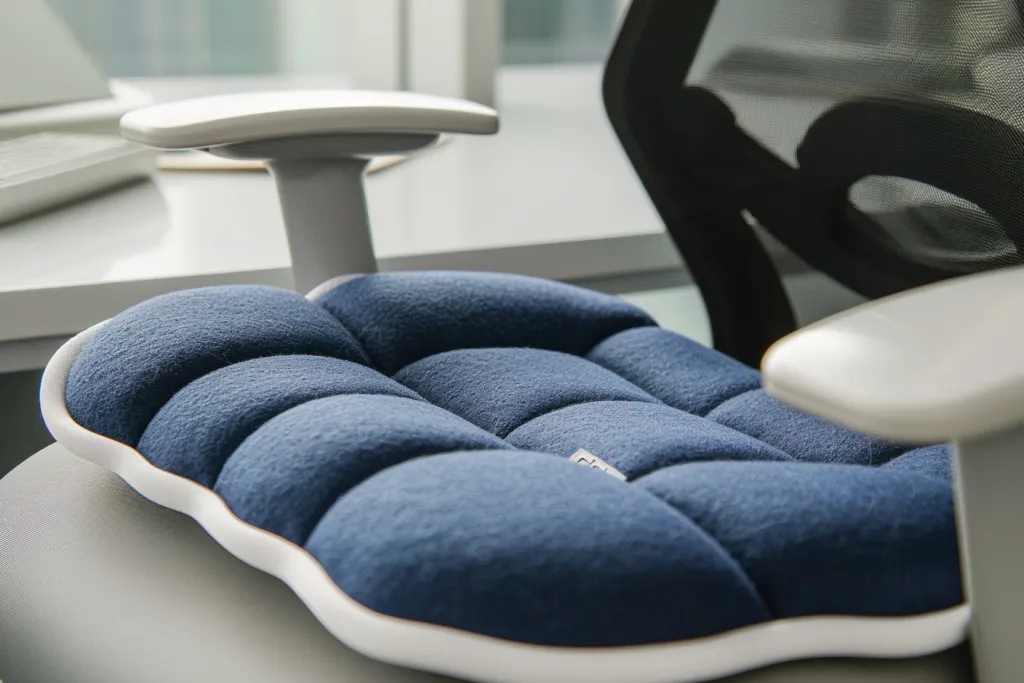
Size and fit are important measurements when choosing an office chair cushion, as they are both important in determining a product’s usefulness and overall comfort. A cushion that is too small or too large to properly fit a chair can mean that a user slumps, loses support and negates the ergonomic value of the cushion.
With that in mind, make sure to measure your office chair before buying – and take into account the thickness of a cushion, as it might alter the height of the seat, as well as the angle of your hips and knees. A good cushion will improve the way you sit, without changing the ergonomics of your office area.
Beyond size and shape, compatibility means that the cushion will work with different kinds of chairs: the more flexible the design, the better. If the cushion works well for callipygian or saddle-seaters, it is even more important that it works with chairs designed for perchsitters.
Evaluating additional features
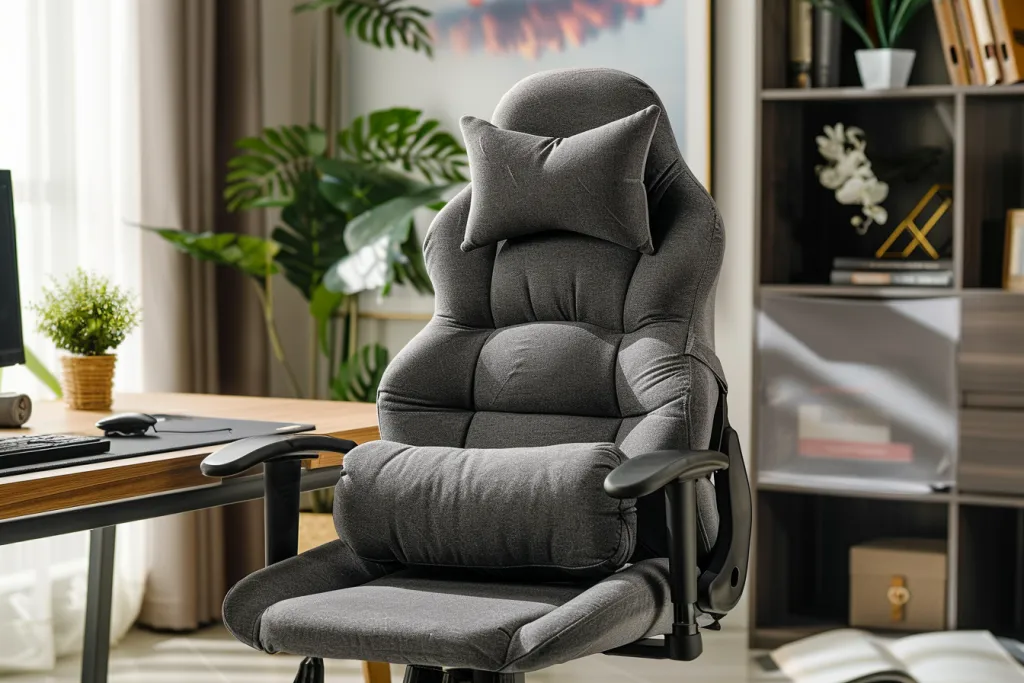
However, other features take the humble office chair cushion a step further, increasing functionality and convenience. Non-slip bottoms keep a cushion from sliding around while in use, while built-in handles provide portability so that users can maintain comfort while moving from one seating environment to another.
Others have pockets, pouches or special temperature-regulating technologies, which can be a boon for people sensitive to either hot or cold sensations. These kinds of features can enhance one’s experience of a cushion, going beyond mere comfort and support, albeit with a cost.
Conclusion
But actually, an office chair cushion is an important investment into your health and your ability to perform week in and week out. When you consider ergonomics, style and materials, quality and durability, size, and features, you can find the cushion that’s right for you. The right cushion truly can change your sitting life, by offering you support and comfort that can make a lasting difference to how you feel.
